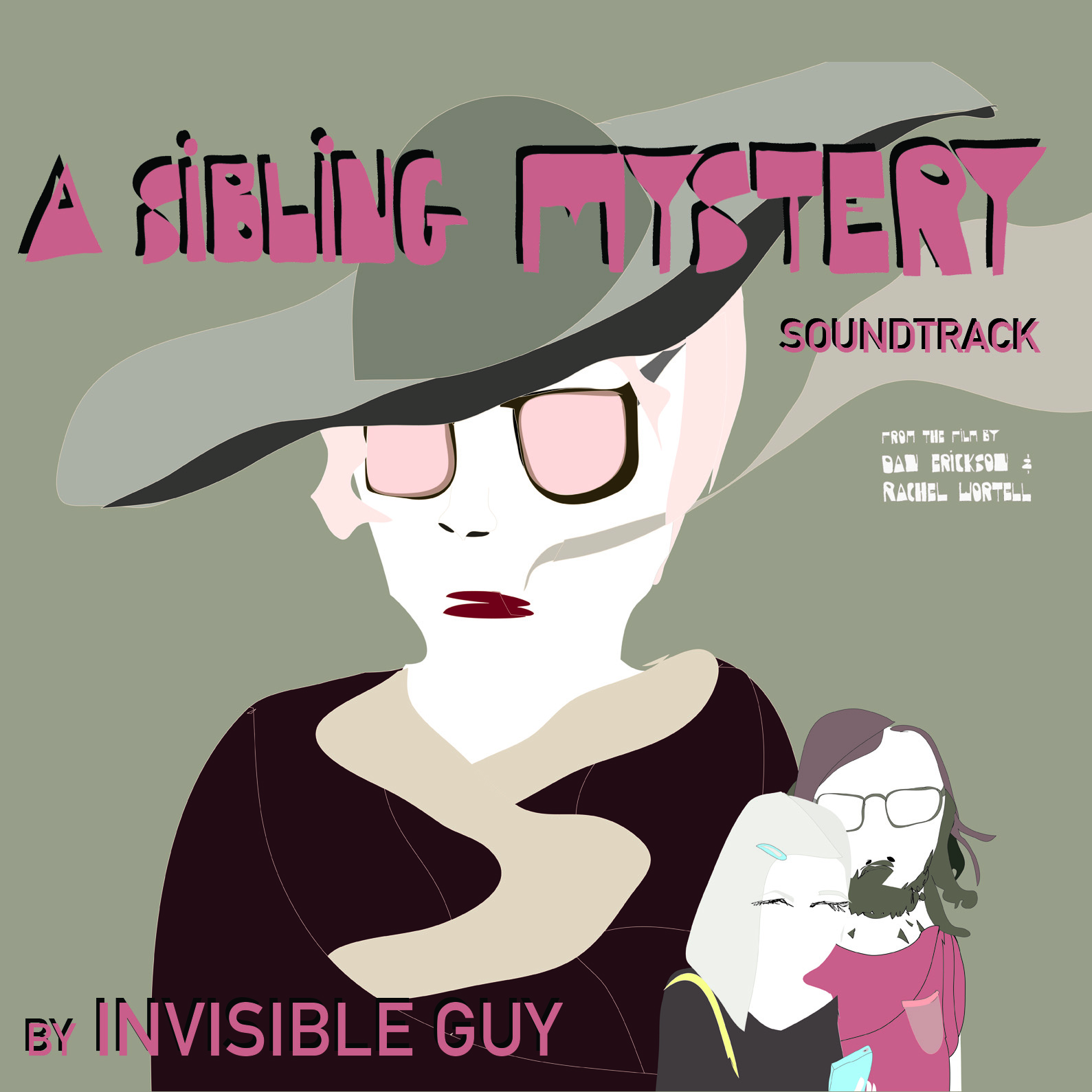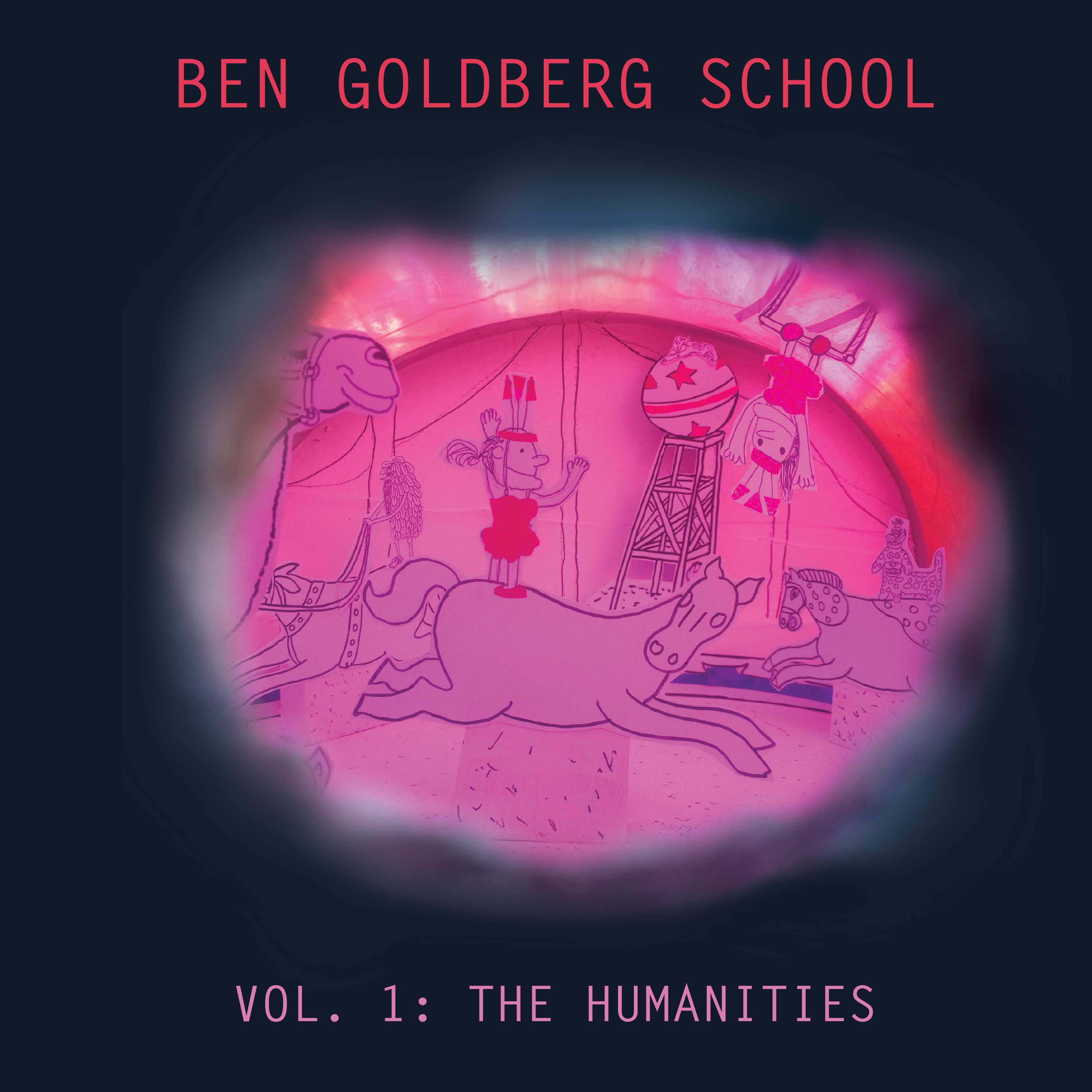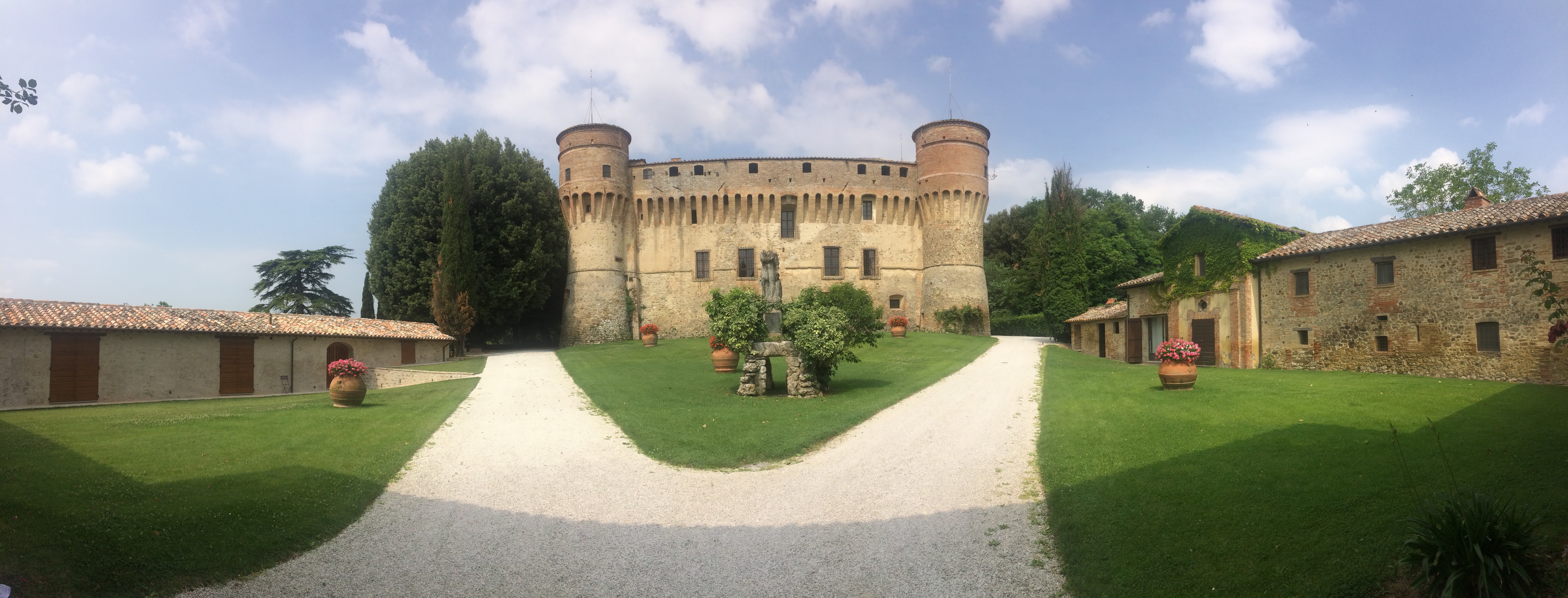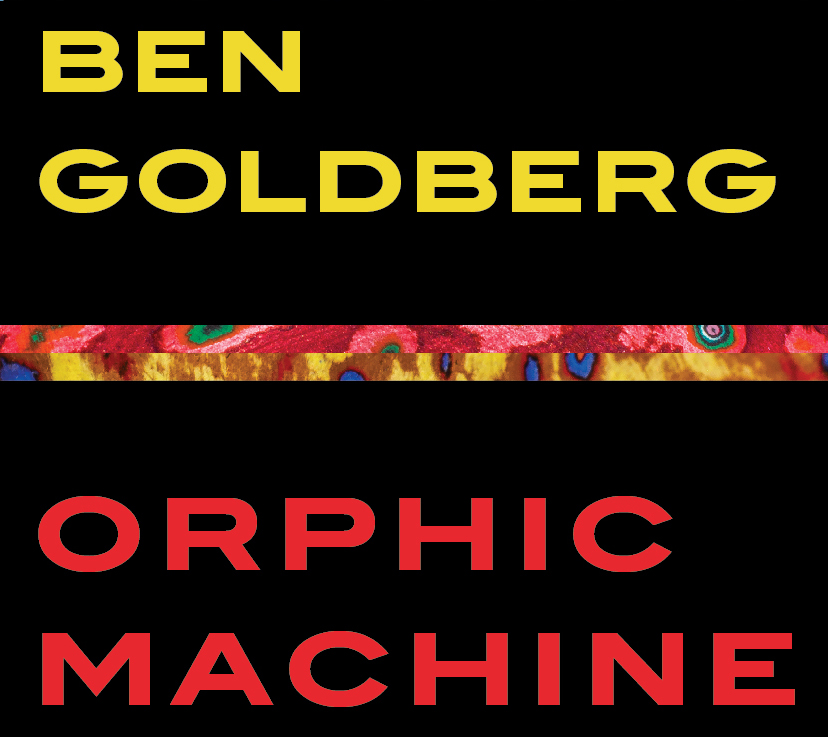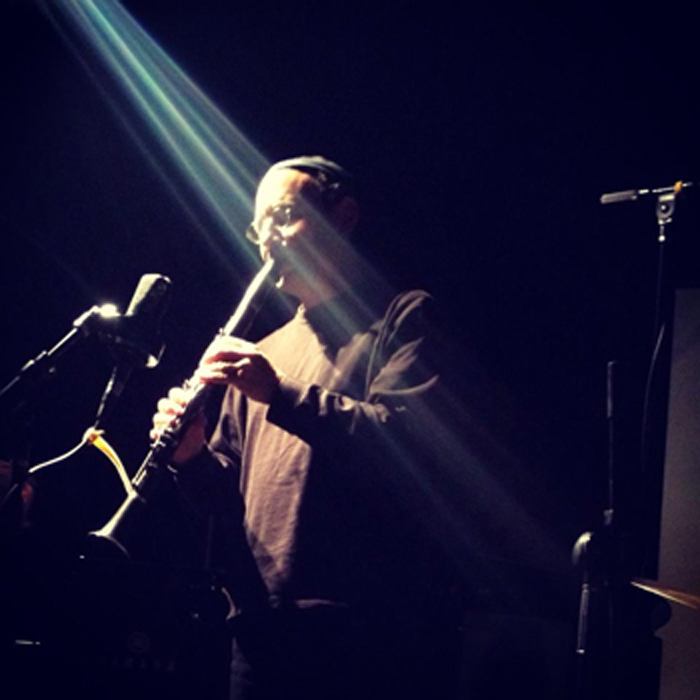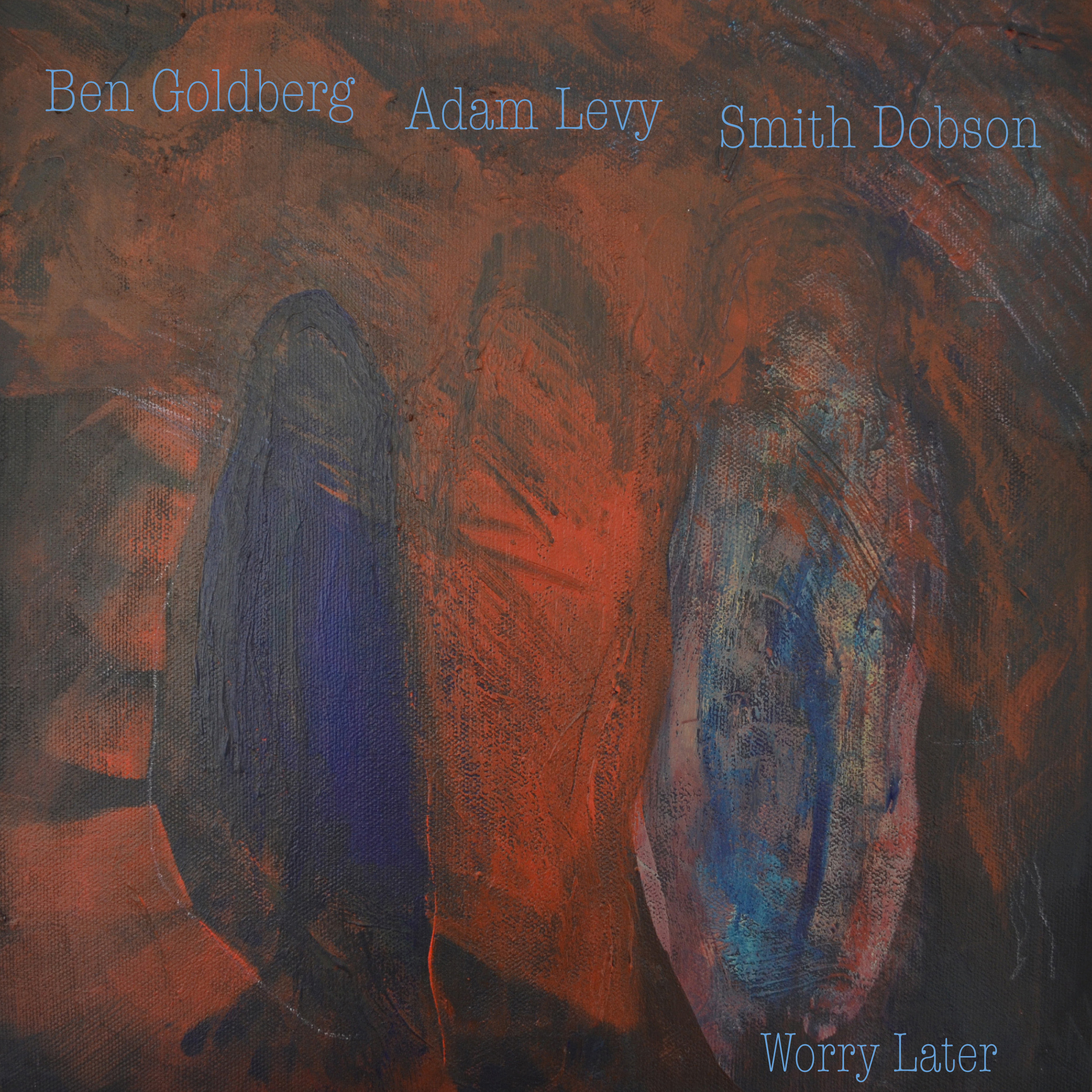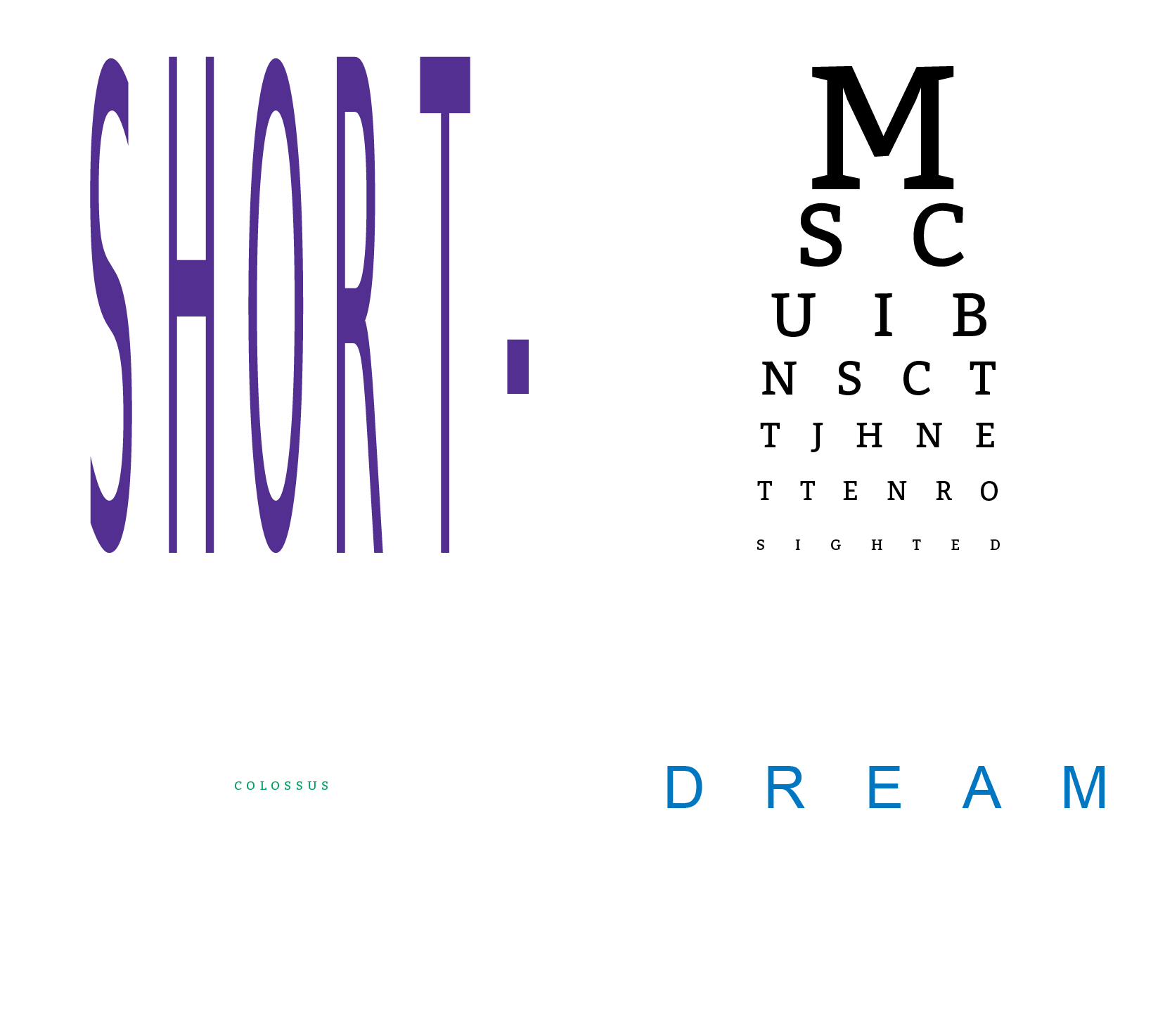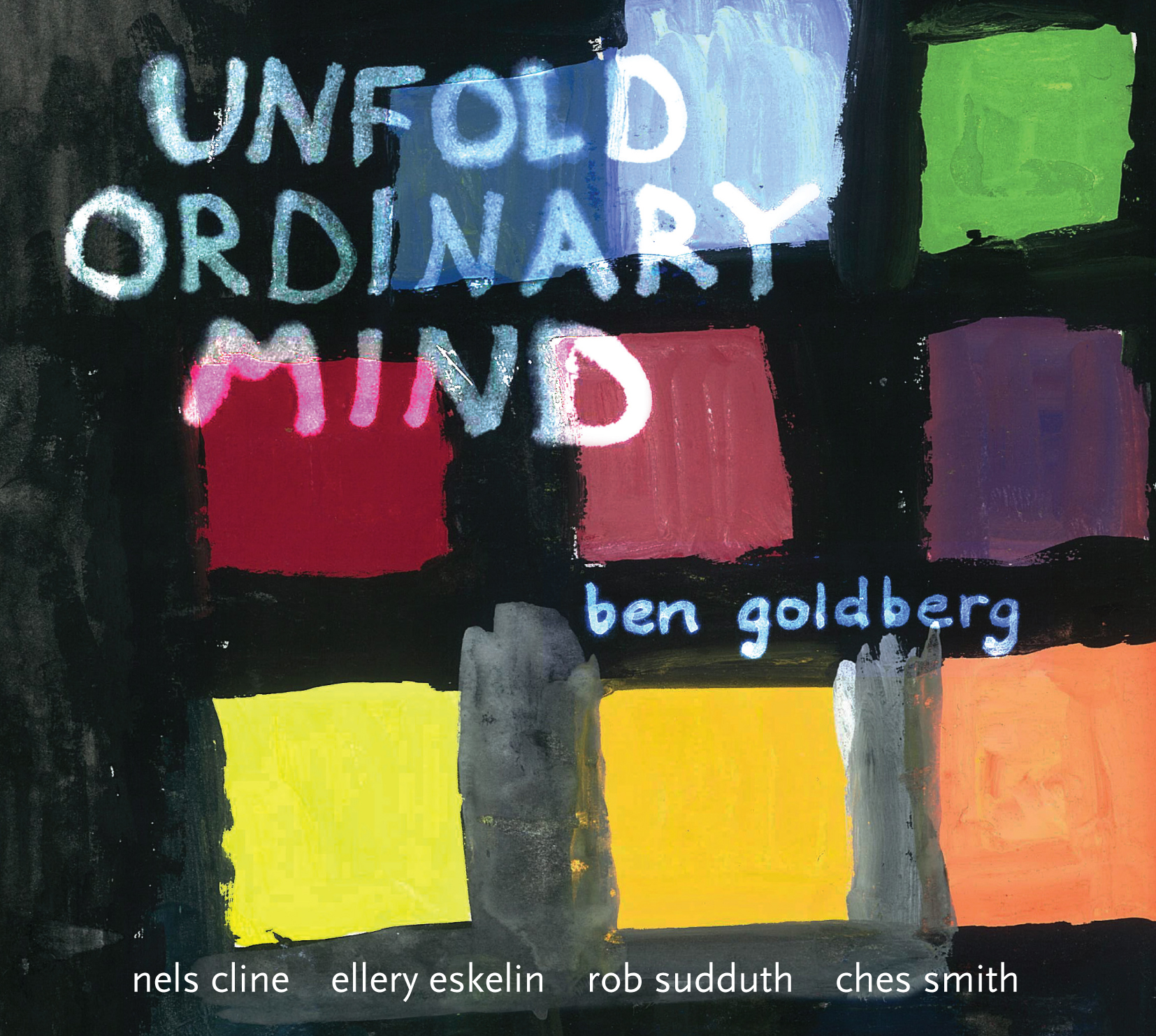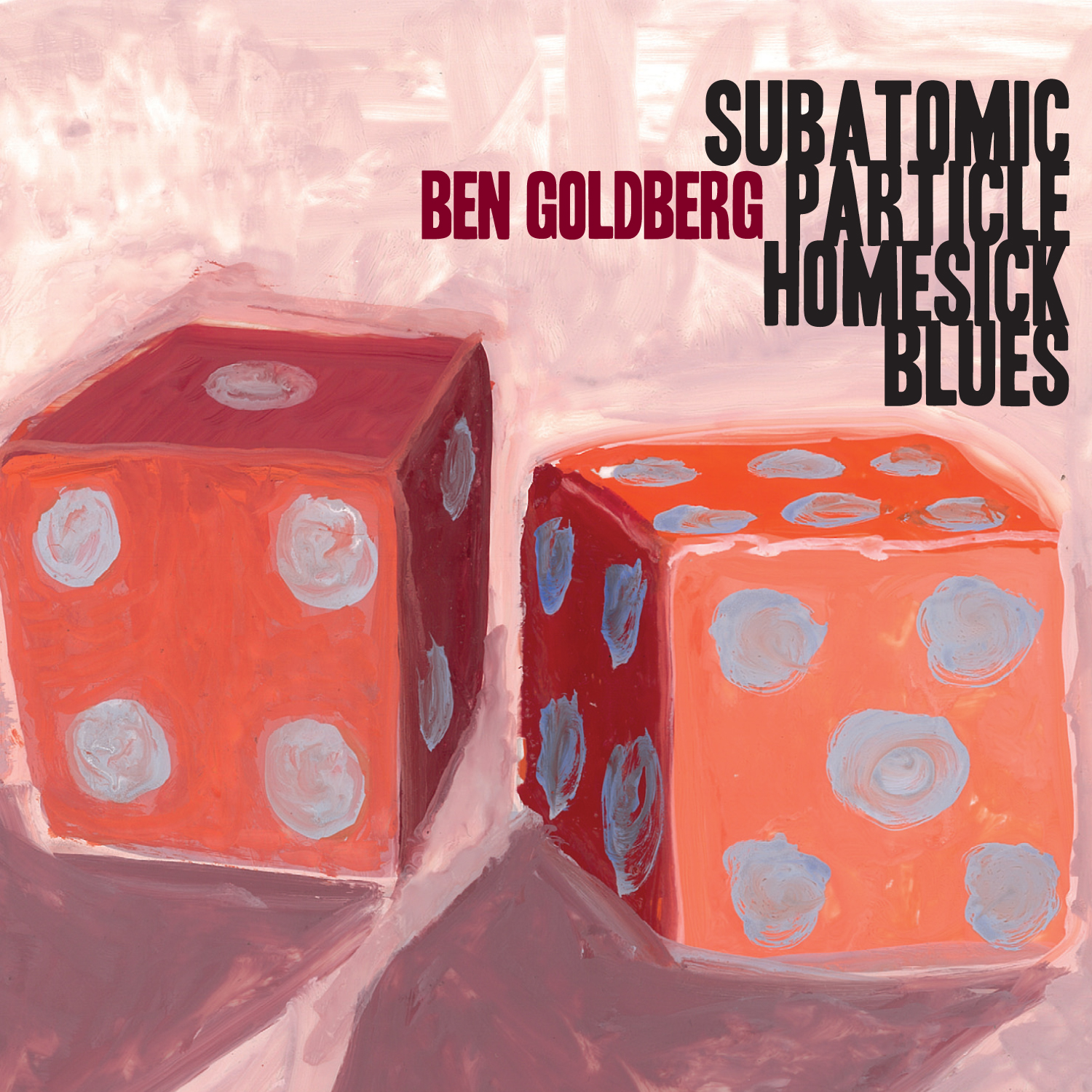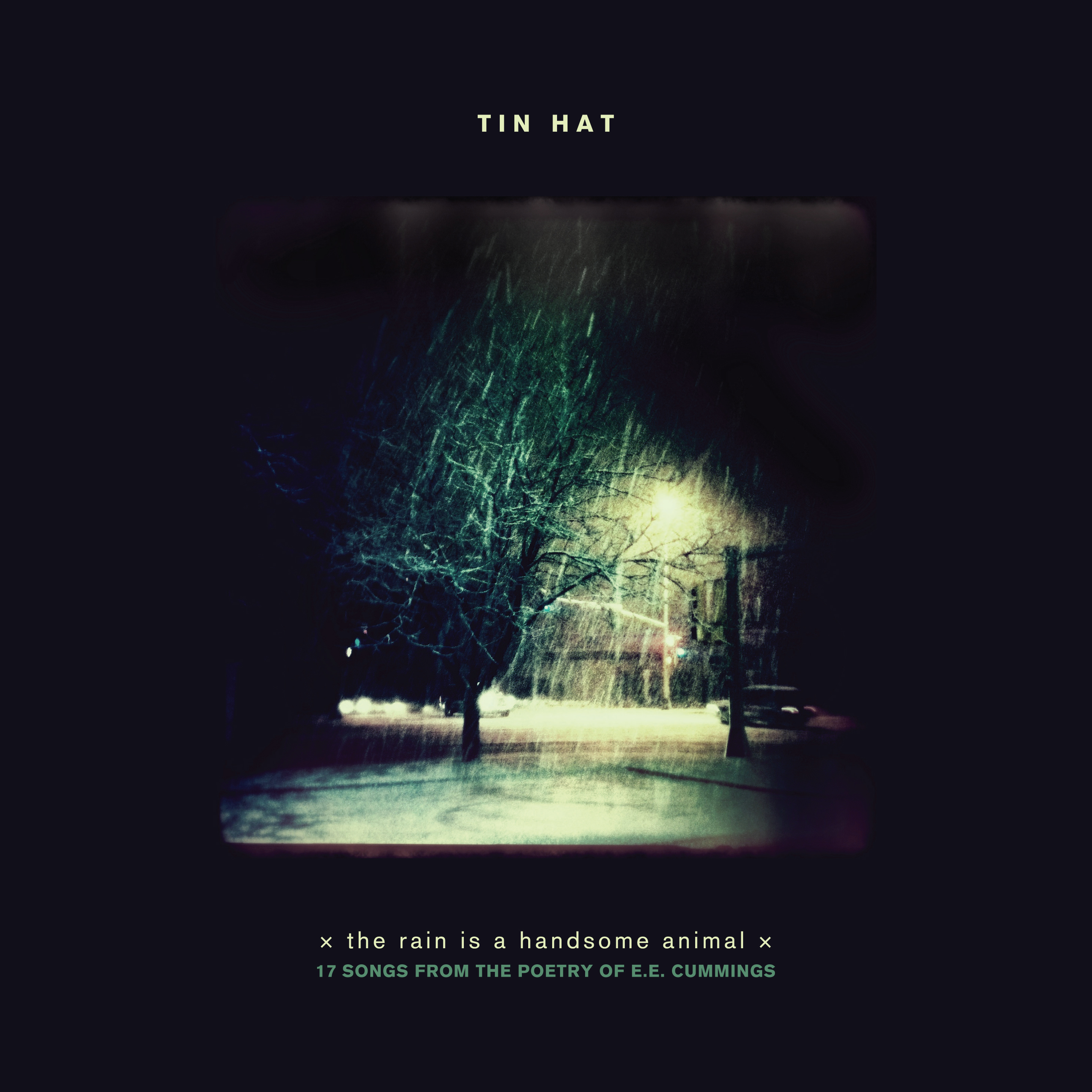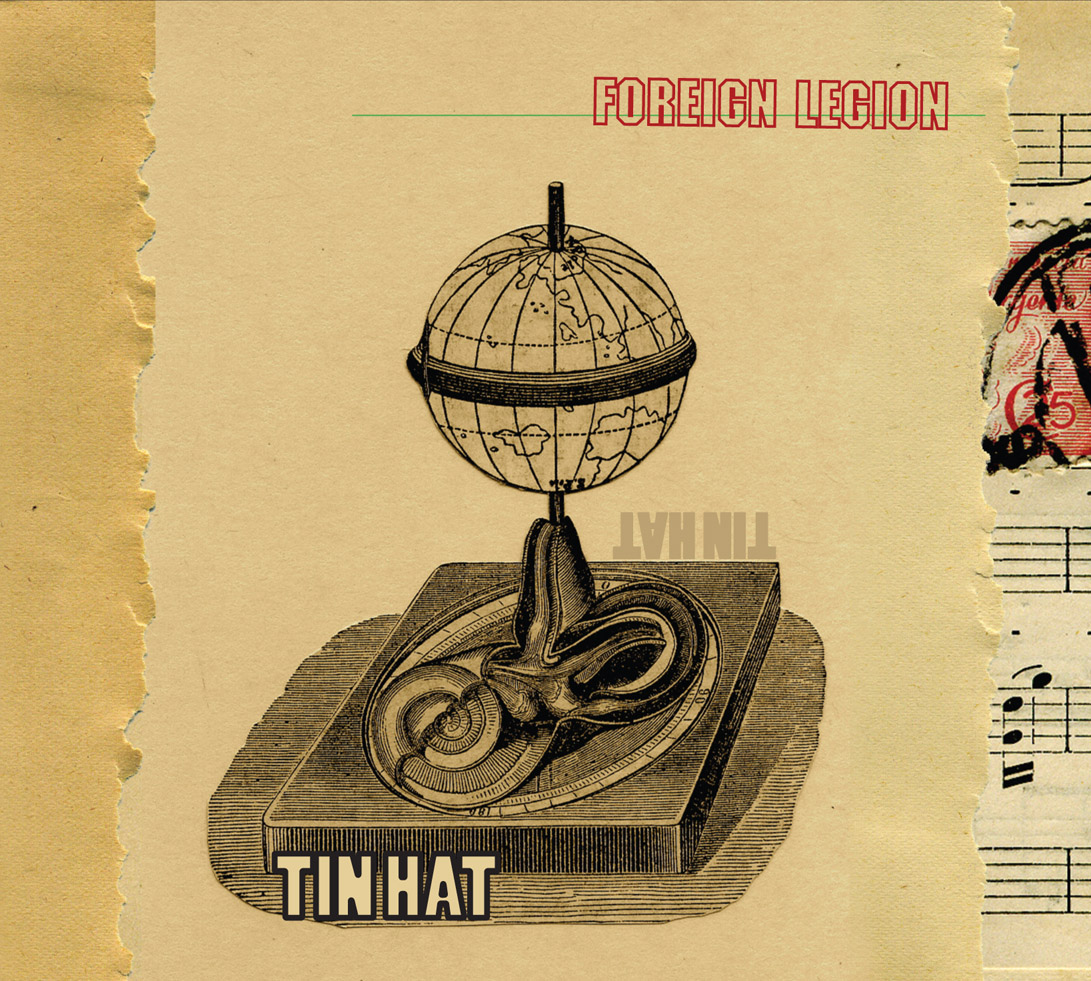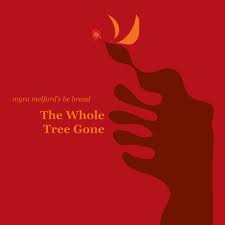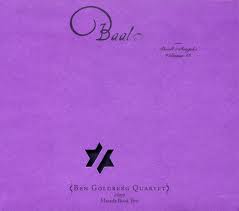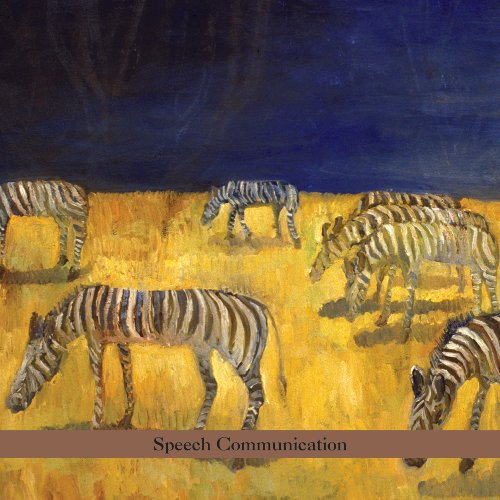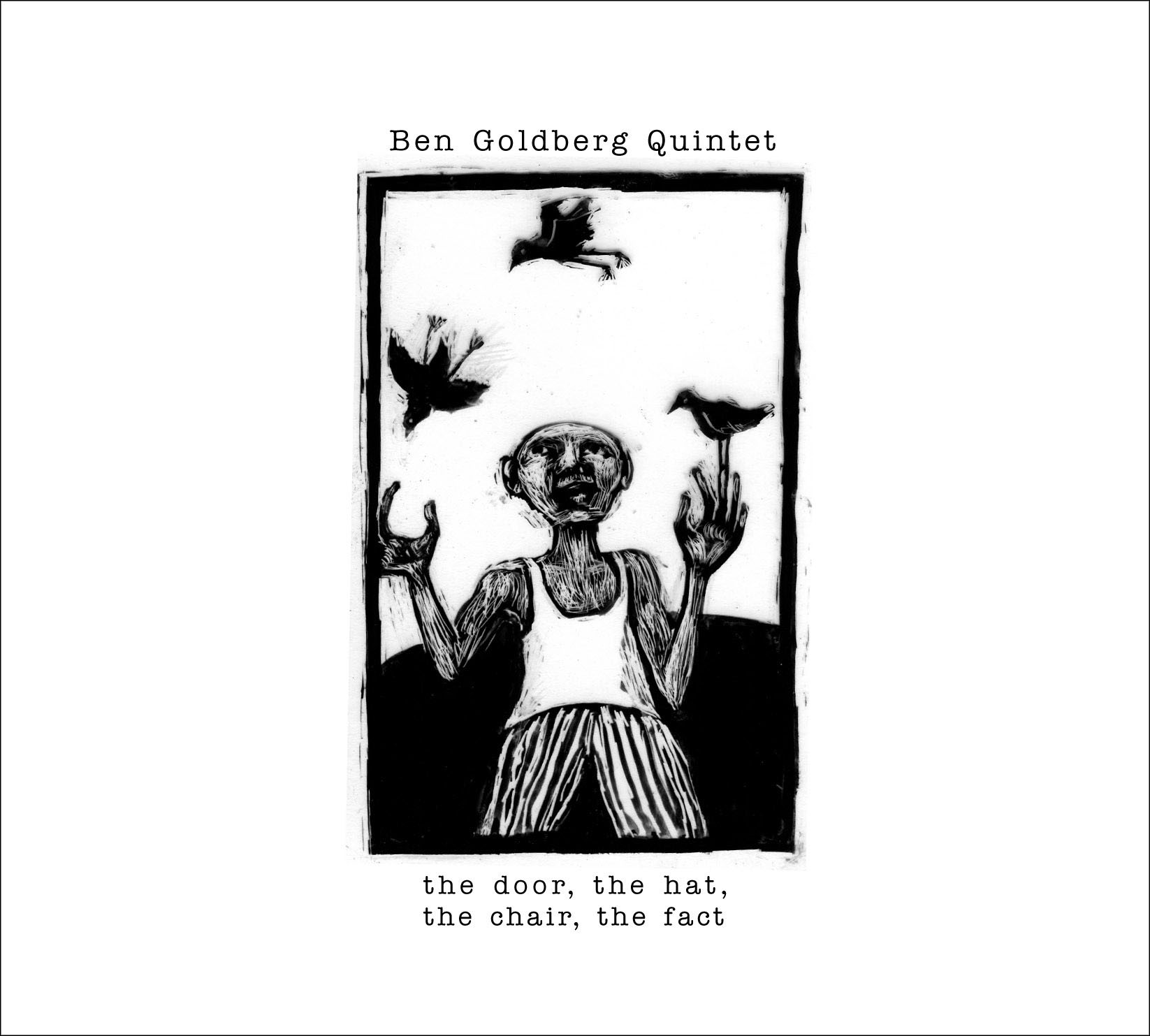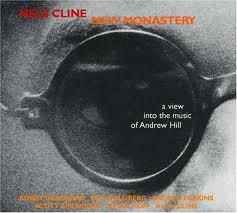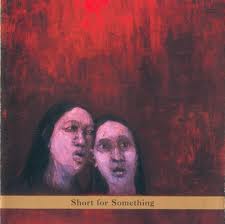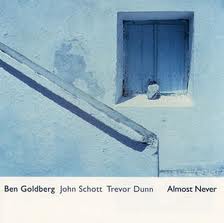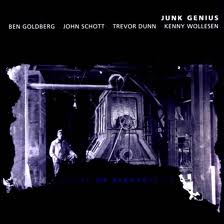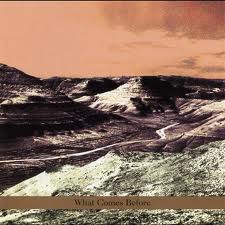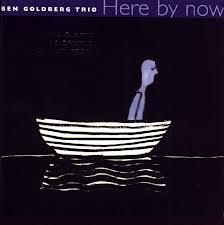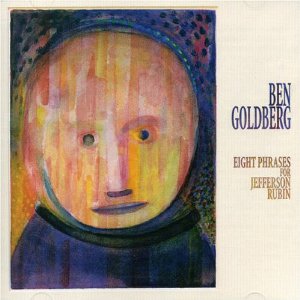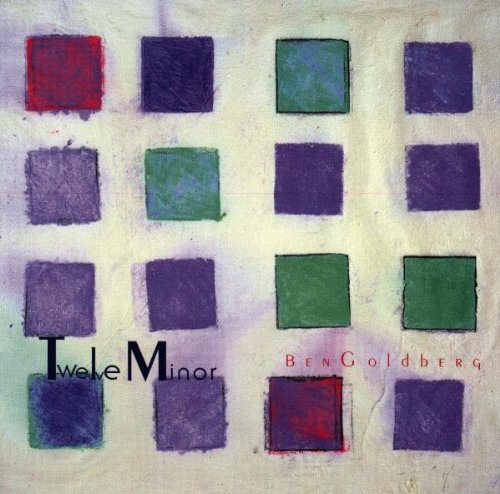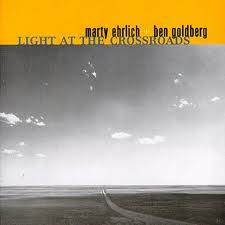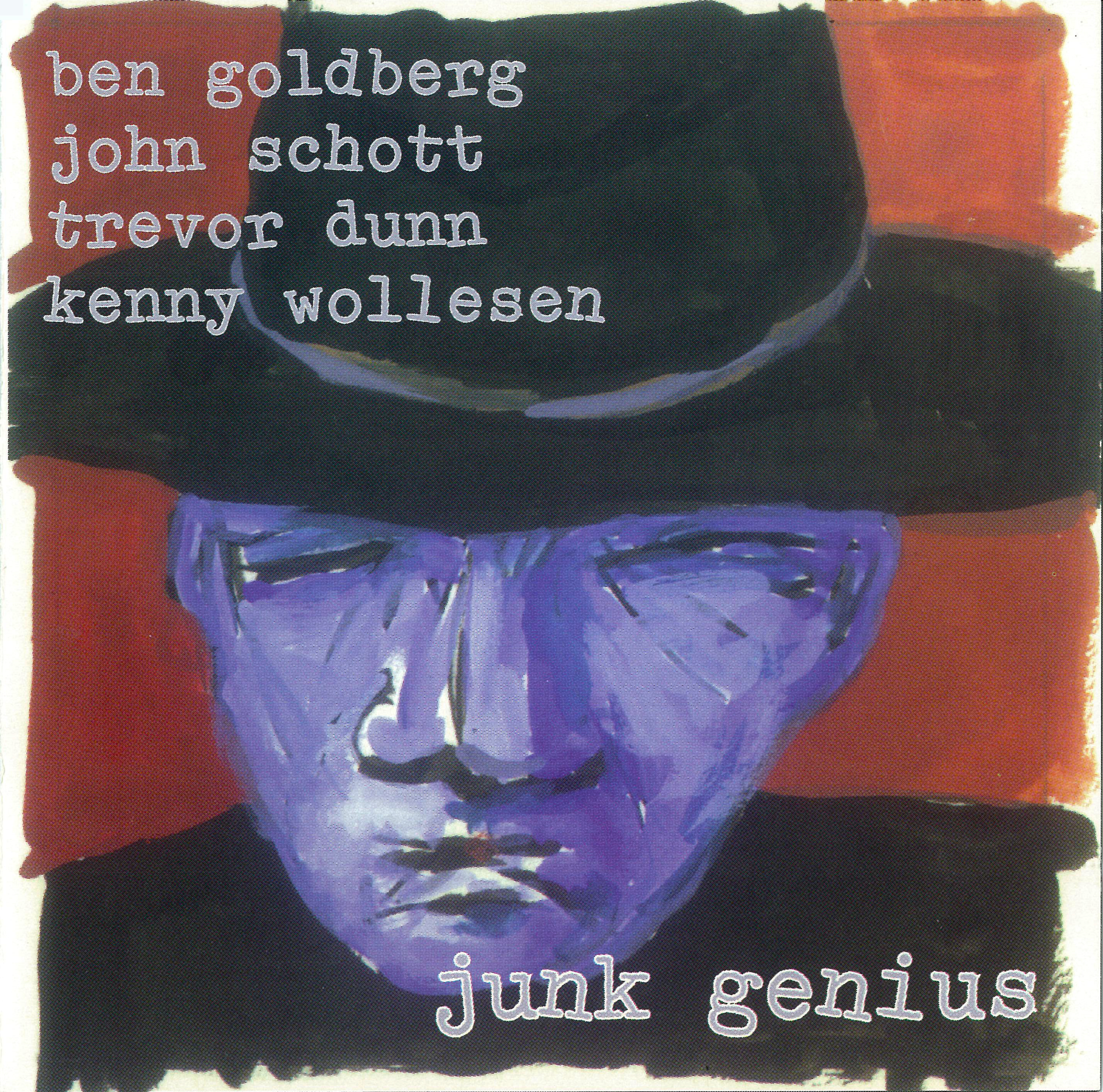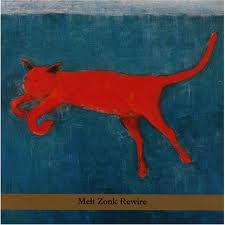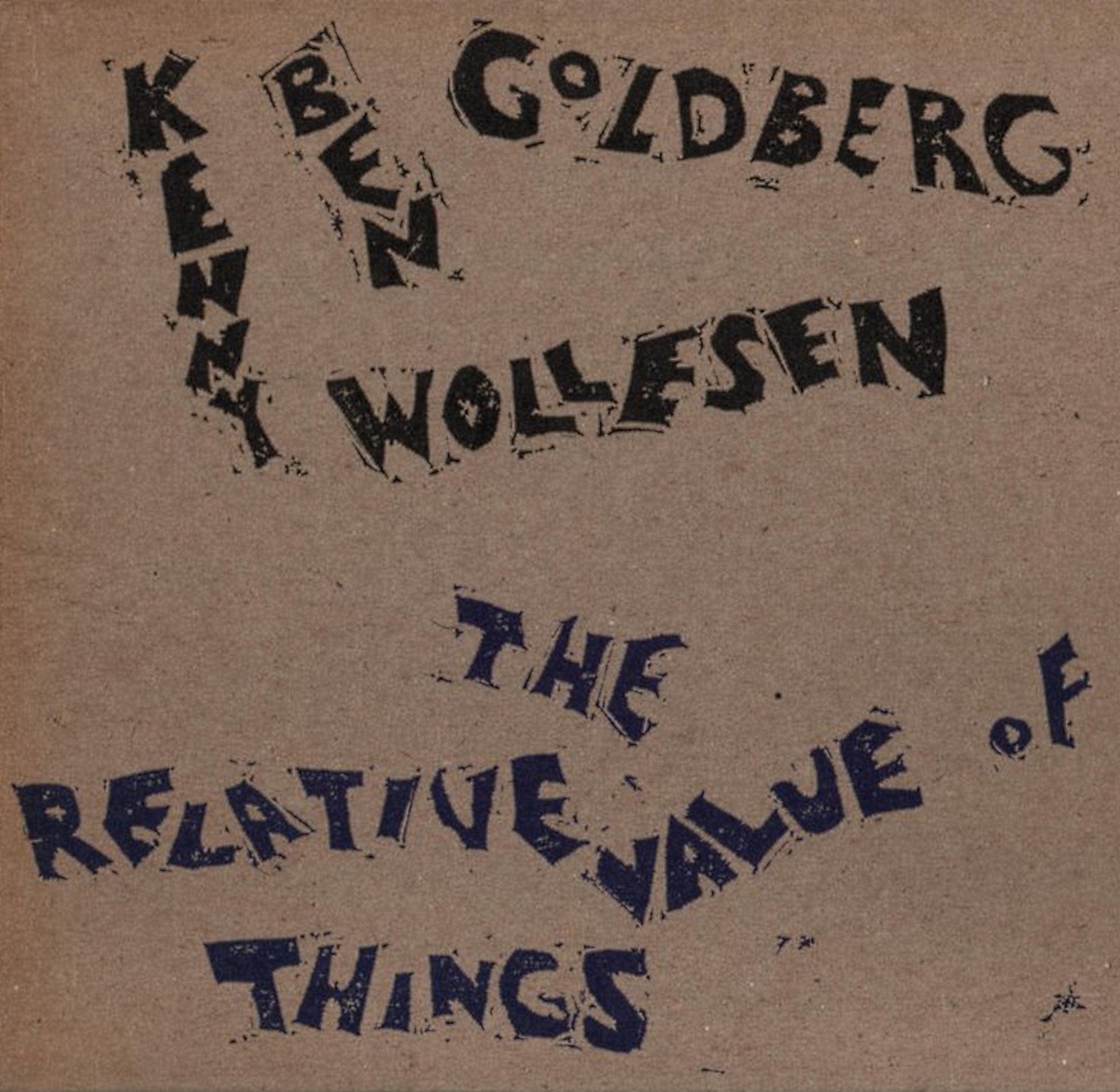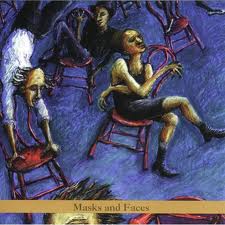A Sibling Mystery - Soundtrack by Invisible Guy
Invisible Guy
2017
Ben Goldberg
 Production Records
Production Records
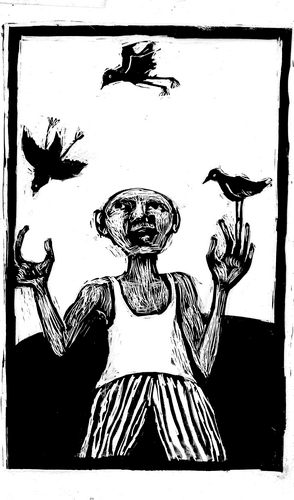
Invisible Guy
2017
Ben Goldberg School
BAG Production :: 2017
The first record by Ben Goldberg School. Six songs by me and one Merle Travis hit.
Orphic Machine
BAG Production :: 2015
"The function of poetry is to obtain for everybody one kind of success at the limits of the autonomy of the will."
Goldberg/Sudduth/Ellman/Cardenas/Dunn/Smith
2015
In February/March 2014 I had a one week residency at The Stone in New York -- 12 sets in 6 days. For the last set of the last night I assembled some of my favorite musicians -- Liberty Ellman, Steve Cardenas, Trevor Dunn, Ches Smith, and Rob Sudduth -- and we performed one of my favorite songs, "Let's Cool One" by Thelonious Monk. Fatigue had set in but the mind was open, and we played at the slowest tempo I could imagine, right around quarter note = 13 seconds. I had a feeling that something would take over sooner or later, and I think I was right. The song lasted 44 minutes. Luckily it was recorded. Now I give it to you and hope you get something from it. This record is free on Bandcamp. Love to all.
Let's Cool One composed by Thelonious Monk
Recorded March 2, 2014 at The Stone by Philip Weinrobe
Mixed by Philip Weinrobe at Way Up Studios, Brooklyn
Mastered by Jon Cohrs at Spleenless Mastering, Brooklyn
Ben Goldberg - clarinet
Steve Cardenas - guitar
Liberty Ellman - guitar
Trevor Dunn - bass
Ches Smith - drums
Rob Sudduth - tenor saxophone
Ben Goldberg / Adam Levy / Smith Dobson
BAG Production :: 2014
Here is a lovely record of Thelonious Monk compositions, played by Adam Levy on guitar, Smith Dobson on drums, and myself on clarinet. We had a relaxed and surprising time at Jeff Cressman's studio in January 2014, and I think the music reflects the friendliness and weirdness of the session. This is a download-only release!
Ben Goldberg / John Dieterich / Scott Amendola
2014
In August of 2010 Scott Amendola, John Dieterich, and I recorded a short program of amazingly beautiful music. It has taken a while, but I think the wait was worth it -- the cd, Short-Sighted Dream Colossus, is available as of September 16, 2014. I think you will enjoy it.
BAG Production :: 2013
I have been developing my abilities on the Eb contra alto clarinet (a weird member of the family, pitched below the bass clarinet) for some years, mostly in my work with the group Tin Hat. Somehow it occurred to me to have a band where I was the bass player, on this instrument.
Of course the group would need two of my tenor saxophone heroes (Ellery Eskelinand Rob Sudduth), a guitar genius (and now certifiable rock star) (Nels Cline), and the deeply tumultuous drummer Ches Smith.
So after finishing up the premier of my latest giant project, Orphic Machine, in March of 2012, I wrote a bunch of songs and assembled this crew at the Bunker studio in Williamsburg one day in May. We learned the tunes, rehearsed, and recorded them all in just a few hours, and the results are extraordinary -- raw, dire, and to the point.
Molly Barker did the cover art and painted a lovely fold-out booklet that is included with the cd.
While you’re waiting for the record to come out, you can listen to the track xcpf here.
BAG Production :: 2013
In 2008 I spent a few days with an amazing group of musicians:
Joshua Redman, tenor saxophone
Ron Miles, trumpet
Devin Hoff, bass
Ches Smith, drums
Scott Amendola, drums
Joshua Redman and I had gotten to know each other when SF Jazz presented a double bill of my trio Plays Monk and Josh’s trio featuring Joe Lovano. Later I invited Josh to sit in with my quintet, and he suggested that we make a record together. Ron Miles and I are both from Denver and I had always been crazy about his playing so I invited him (this was before we recorded Go Home). Of course anything can happen when the rhythm section is Good For Cows.
We rehearsed for a day and then recorded at the legendary (and lamented) Bay Records in Berkeley, California. The session had a loose, swinging feel, and we tried a wide range of tunes, from the avant-swing of “Evolution” to the exuberant funereal march of “Possible,” and I even made an arrangement of Bob Dylan’s version of “Satisfied Mind."
Like many fine products, this one then took some time to itself in order to age properly before making its way into the world. But here it comes on February 19. We are offering an opportunity here to pre-order a copy of the cd, or to pre-order the album on iTunes (and have it delivered February 12).
Here is a track from the record: Joshua Redman and I playing a duet on my tune Study of the Blues.
Tin Hat
New Amsterdam :: 2012
Fourteen songs with lyrics taken from the poems of E E Cummings, and three instrumentals.
This is a really pretty record. Everyone in the group wrote songs and we recorded them at just the right time, after a tour while they were still fresh. Beautiful sound by Mark Orton at Dead Aunt Thelma's studio in Portland.
Tin Hat
BAG Production :: 2010
"Modern melancholy, modern jubilation, modern swagger and modern volatility – for the last few years Tin Hat has reminded us that things aren’t exactly as they used to be."
---downbeat
The 2010 edition of Tin Hat: Mark Orton, Carla Kihlstedt, Ara Anderson, Ben Goldberg
I actually played on the very first Tin Hat Trio concert ever! Rob, Mark and Carla had me as a guest at the Hotel Utah in San Francisco. I don’t even want to guess what year it was. From the very first I could hear a beautiful open-minded approach. At the time, a lot of musicians were enjoying playing with people from other musical worlds – “free improvisers” playing with “jazz” musicians, etc. When Tin Hat Trio came along, they had everything in their bag – grooves, beautiful melodies, all kinds of harmonic motion, “free” playing, etc. – and you could hear that for them it was all music. They did not feel the need to identify with a particular camp. So that was very refreshing. When Rob left the group I was very happy to be invited by Mark and Carla to join. It was exactly the right time for me, and it’s been a ball ever since. For a while, Zeena Parkins was the fourth member, then later Ara joined us. I have learned so much about music from playing with these guys, it has completely changed my perspective.
In 2007 we made The Sad Machinery of Spring. We were meticulous in the studio to create just the right sound -- a hallmark of Tin Hat records. But there is another side to the group: unbelievable live performances. When you're on tour things loosen up night after night, anything can happen, and then it's gone forever -- unless you are lucky enough to have recorded it, which brings us to Foreign Legion. We had recordings from gigs all over the place, and when we listened to them we found a couple of gems: the Freight and Salvage Coffeehouse in Berkeley and a festival on the island of Mallorca.
Mark did the mix at his studio in Portland so he probably spent the most time with these tapes. Here is what he says:
Foreign Legion includes material from the entire history of Tin Hat, from the title track -- one of the first things we ever played as a group -- to new songs that have never appeared on record. Berkeley’s Freight and Salvage Coffeehouse has always been one of our favorite venues -- we consider it our home town club, and I think you can hear something special in the lovely performances recorded there. The other half of the disc comes from a concert in Mallorca -- a really fun show in a far-flung corner of the world. They put on a great festival there, we had been well fed and provided for, and we were lucky to have it recorded. Even though our other records reflect our interest in sounds you can only get in a studio, listeners know that Tin Hat has always been about live performance -- the kind of group improvisations and chances you take in front of an audience -- so I'd say the live record has been a long time coming, and I couldn't be happier with the results.
Myra Melford's Be Bread
Firehouse 12 :: 2010
Here is a fantastic group led by my friend and colleague (and one of my heroes) Myra Melford. Myra is simply one of the great pianists of our time, whose writing and playing are a consistent source of delight and amazement, bringing together vast areas of knowledge, learning, wisdom, and spontaneous bone-chilling musical perfection. We recorded the album in New Haven at the Firehouse 12 studio in December 2008.
The group is: Myra Melford, piano & harmonium; Cuong Vu, trumpet; Ben Goldberg, clarinet; Brandon Ross, guitars; Stomu Takeishi, bass; Matt Wilson, drums.
"Myra Melford is at once a dancer, a romantic and a savage suckerpuncher at the bench . . . beating all hell out of the piano and making it beautiful."
—Coda Magazine
Ben Goldberg Quartet
Tzadik :: 2010
John Zorn invited me to contribute to his series of recordings of his Book of Angels. We made the record in an afternoon with Greg Cohen, Kenny Wollesen, and Jamie Saft.
Great tunes, a happy feeling, and the whole thing expertly recorded by Marc Urselli.
Ben Goldberg Trio
Tzadik :: 2009
A trio record with Greg Cohen on bass and Kenny Wollesen on drums. Commissioned by John Zorn for the Radical Jewish Culture series on Tzadik. Recorded in Spring of 2009 when Greg and Kenny were in San Francisco for a Masada week at Yoshi's. Great cover painting by Molly Barker.
The sessions were relaxed -- Greg provided his usual good humor as well as the unstoppable force that is his musicianship. A pleasure as always working with Kenny.
The record is dedicated to two departed friends: Ron Stallings (1946 – 2009), and my father Alvin Goldberg (1931 - 2009).
From the liner notes:
Speech Communication is the name of the academic discipline to which my father, Alvin Goldberg, devoted his intellectual and professional life. Other than paying for clarinet lessons, my father’s contribution to my musical education consists of a black Manhasset music stand that he obligingly brought home from the office one day when I was in junior high school and which I still have. As I played etudes and scales I would be reminded of where the music stand came from by the word SPEECH, which someone had painted in white letters across the bottom. Over the years this began to seem less a reminder of petty theft and more an exhortation of what we are called upon to do when making music. SPEECH! And, of course, communication.
For more about New Klezmer Trio, please have a look at my essay "New Klezmer Trio and the Origins of Radical Jewish Culture" in the Media page of this website.
Tin Hat
ryko :: 2009
This is the first record by Tin Hat (Mark Orton, Carla Kihlstedt, Ara Anderson, and myself) since I became a member of the group in 2003. We based the music on our readings and discussions concerning the work of Bruno Schulz. One thing I enjoy about Tin Hat is the opportunity to play a lot of Contra Alto Clarinet -- the group has given me a chance to get better on this unusual instrument and see what it can do. Everyone wrote music for the record and the material is quite strong, plus a gorgeous sound thanks to Mark Orton.
Clarinet Thing
BC Records :: 2009
Cry, Want is the second record by Clarinet Thing -- our first as a quartet. Clarinet Thing was founded twenty years ago by Beth Custer when she wrote a letter (typewritten -- this was before email!) to several of her fellow clarinetists suggesting that we start a band. The group now consists of Beth, Harvey Wainapel, Sheldon Brown, and myself, playing almost the entire range of clarinets, from Eb sopranino to Eb contra alto.
Cry, Want is named after a piece by Jimmy Giuffre, and features a suite (by Giuffre and Carla Bley) that were part of his trio's repertoire in the 1960's, along with originals by Sheldon, Beth, and myself, a lovely Guadaloupean piece and Sheldon's monstrous arrangement of Herbie Nichols' great 2300 Skidoo, replete with Herbie's piano solo played by four clarinets! Jeff Cressman did the fine natural-sounding recording and mix. You can buy a copy of the record from BC Records, or CD Baby.
Go Home
BAG Production :: 2009
Here is the first record on my new label, BAG Production Records (BAG 001)
The band is
Charlie Hunter, seven string guitar
Scott Amendola, drums
Ron Miles, cornet and G Trumpet
Ben Goldberg, clarinet
Charlie, Scott, and I had been talking for a few years about recording together, and saw an opportunity when Scott and I would be at the Jazz Standard in New York for a week in April, 2008. Ron Miles was in town with Bill Frisell, and he joined us for two days at the Bunker studio in Williamsburg. I provided the tunes and a lovely time was had by all. Later, when I was thinking about it, the name Go Home came to me because the sound of the group is so direct and honest that for me it goes back to when I was little and music hit me so hard. Also, in Get Backon Let It Be, which I listened to a lot back then, I believe Paul says "go home."
This CD combines the studio session with some tracks from a live recording made by Jeff Cressman at the Throckmorton Theatre in Mill Valley, California in the fall of 2008. I think the cd captures the unique spirit of the group, with inspired performances, unstoppable grooves, and a beautiful sound throughout, thanks toMark Orton's mix and mastering by Jon Cohrs of Spleenless Mastering.
Molly Barker took the photograph on the cover and Lynda Nakashima designed the package to create a lovely debut for BAG Production Records.
Ben Goldberg Quintet
Cryptogramophone :: 2006
From the liner notes:
This music is for Steve Lacy. It was written in 2004 after I learned that Steve had cancer. I was thinking and thinking about him and I wished there was something I could do so I wrote down all the music I could and I kept thinking of Steve and hoping for the best.
Once Steve Lacy gave me a lesson, I mean I went over to his house for a lesson, I had already been doing my best to draw a lesson from his work. It was 1985, for some reason I had been in Paris a lot and when I was there I would go to the Sunset and listen to Steve and politely beg for a lesson. Finally he relented, maybe so I would stop bothering him and also saying, “I have a soft spot for clarinetists.”
I should say that back then I had a hero and it was Steve Lacy. I mean the kind of hero where you wish you could do what they do. This was mostly based on the evidence of “Evidence,” a record he made in 1961 with Don Cherry. I had to listen to that record about four times a day, and though I was in the dark I memorized Steve Lacy’s solos and tried to figure out what he was doing. The note that lifts all other notes up into the world. Punctuation. The line that’s backwards and forwards and the pop of logic more logical than logic.
At the lesson Steve said he wasn’t really a teacher so maybe we could treat this like a visit to the doctor: play a duet and based on that diagnosis he would prescribe something. Evidently the fundamentals needed vitality. Steve said you had to know the difference between materials and material and suggested two lines of inquiry concerning materials. These were exercises for uncovering the basic elements.
He talked matter of factly about the invisible, and I caught a glimpse of what an artist does. He said, “If you stay in the dark long enough, eventually you’ll see the light.” He gave me a copy of “Hocus Pocus” and a book of rhythm by Kenny Clarke and I was so happy I wrote a poem and worked on those exercises for ten years. The exercises were strong medicine – the first time I played them I got dizzy and almost fainted.
In 1992 I was preparing a concert of Steve’s music and he sent me a fax of “Blinks.” There was a note at the top, and when I started writing this music the note became a song: “Dear Ben, been out of town. Probably too late but here’s Blinks anyway. I am hardly here these days.” Blinks is my favorite Steve Lacy song, it gets the up and down just right, plus the poem was on it so a few of the pieces here are based on “Blinks.”
I had booked the studio for June 7th; Steve passed away June 4th. I was so sad, a lot of people were calling each other up. We had a rehearsal and then went and made the record. It was a sad time. The title comes from a poem by Robert Creeley. Steve Lacy wrote a song called The Door and once he sent me a postcard signed “Chapeau.” Kenny Clarke sat on a chair. In honor of the durability of Steve’s music I once made up an exercise called Pursuit of Facts.
Pursuit of Facts. A fax arrived, with a poem on it. I am hardly here these days.
Ben Goldberg
October 2005
Nels Cline Group
Cryptogramophone :: 2006
I used to hear Nels play in Los Angeles when we would go there in the 1980s and I always heard something going on. I knew I wanted to play music with him. We first worked together in 2003 when The Nels Cline Singers (Nels, Scott and Devin) (hey, that’s 2/3 of Plays Monk!) invited me to play a solo set at one of their concerts, and also to sit in with them on some songs. What an honor. I was nervous about the solo set but it went fine. I played some of my own songs plus a lovely song by Steve Lacy that I learned for the occasion called Hallmark, from the record Hocus Pocus. We had a good time playing together and later when Nels got the Andrew Hill project together he asked me to be part of it.
The music of Andrew Hill has been extremely important to so many of us. Graham Connah and I studied and played some of it when we were younger – I think at one point we knew all the songs on Black Fire and most of Point of Departure, as well as the material from the record with John Gilmore. In 1992 I had a grant to put on concerts of music by different composers and when I asked Graham to play in a concert of Andrew’s music he said why don’t I just invite Andrew instead, so I did. Andrew came down from Portland and we rehearsed for a few days and played two concerts, with Donald Bailey and John Wiitala. I think Andrew was pleased that someone wanted to play his older repertoire – he said all the charts had been lost in a fire long ago so in the tricky spots we were recreating it as best we could. The funny thing is that in that concert series another gentleman who joined me in a concert of his own compositions was Bobby Bradford, who I have been absolutely crazy about for as long as I can remember, and who also plays onNew Monastery.
Nels loves Andrew’s music so much and he took just the right approach, making something new in reference to the material. When we made the record there was so much love, we had heard Andrew was not doing so well. We had a chance to play at the SF Jazz Festival on a concert with Andrew’s group, and he was warm and kind as always, though quite ill. The music that he played that night was about the most beautiful thing I ever heard. Then in April 2007 Nels’ group had a date at the Jazz Standard in New York and Andrew played what turned out to be his last concert that afternoon. A tremendous loss, and a tremendous gift that he brought us.
New Klezmer Trio
Tzadik :: 2000
The third record by New Klezmer Trio. We had not been touring at this point, so this was a matter of going into the studio, learning the songs, and hitting. I like the "first take" feel of the record. Although on one song (The Because Of) we didn't achieve that first take feel until the second take!
For more about New Klezmer Trio, please have a look at my essay "New Klezmer Trio and the Origins of Radical Jewish Culture" in the Media page of this website.
Goldberg / Schott / Dunn
nuscope :: 2000
John Schott, Trevor Dunn, and myself.
Cookie Marenco worked her usual magic at OTR and we recorded a bunch of my new songs. After the session we stuck around and recorded some more, and I'm trying to track down that material -- Russ gave us permission at the time to release it but now I don't know where it is! If anyone finds it please let me know. (Late update: Russ found the DAT tapes and will send them to me.)
Nuscope Recordings is still in business, and relasing all kinds of interesting music.
Junk Genius
Songlines :: 1999
This is the second record by Junk Genius (Ben Goldberg, John Schott, Trevor Dunn, Kenny Wollesen). John and I had been studying American folk music -- I think the Harry Smith Anthology of American Folk Music had just been reissued and we were listening to that. We wanted to try something with Junk Genius that would get that homemade feel, but with songs that reflected our harmonic and melodic ideas.
Goldberg / Schott / Sarin
Tzadik :: 1998
Recorded right after Eight Phrases for Jefferson Rubin, at OTR Studios by Cookie Marenco, who had agreed to reserve several tracks of the 2 inch tape so we could make two records on the same tape.
John Schott introduced me to the post-serialist notion of combinatorial structures containing a specified number of notes. We were getting together every week to develop and work on our ideas relating to four-note groups. We found ways to transform structures and create a kind of spontaneous architecture for an improvisation. I don't know if Mike heard what we were doing, but he sure sounded good!
The timing of this recording was just right -- it captures the actual work, rather than a "performance." We sent a copy to John Zorn, who liked it and wanted it for Tzadik. I am very glad this is still available.
Ben Goldberg Trio
Music and Arts :: 1998
Trevor Dunn on bass and Elliot Humberto Kavee on drums. We had a trio for a few years and tried a lot of different ideas on how to play the melodies I was writing. There was one memorable Knitting Factory tour of the East Coast where we had to keep reminding audiences that we were not New Klezmer Trio, and where I learned what a truly unique and brilliant individual Elliot Kavee is. I think this record captures the essence of what we were doing very well, as does the cover painting by Molly Barker. Recorded at Annie's Hall in Berkeley by Jeff Cressman.
And, here are the original liner notes by John Corbett:
There’s a strange artifact of language, the way it can suddenly come unglued and detached from its meaning. Once a threshold is crossed, the familiar term becomes alien. Take the word “dig” (just to keep things jazzy): look at it a while, jot it down on a piece of paper several times in sequence. At some point the word becomes monstrous. It is transformed from a meaningful, idea-bearing semantic particle into a shell or husk, eviscerated of its referent. DIG. Do I know what it means? Is it English? Have I spelled it correctly? In the process of repeating the term I have lost its identity, forgotten what it means, killed it. Which, in truth, probably won’t keep me from using it again.
In the creative music world, this same mechanism is at play when it comes to the word “improvised”. Along with “freedom,” the term “improvised” is the prime fetish of restructuralist music fans’ lexicon (reminds me of Jean Baudrillard, who pointed out how Marxists of the ‘60s fetishized the word “fetish”.) Of course, this is in part an aspect of the difficulty naming the music; calling it “improvised music” (as we all do) is a needed crutch. But the concept becomes reified in the word. “improvisation” expands beyond reproach. It seems self-evident. Yet the more frequently it crops up the more its meaning slips away. It degenerates. It becomes hollow rhetoric. A totem shaken to protect debaters from having to define their terms. A given. A dead word.
Ben Goldberg: “What we try to do in this group is just play the song. The entire performance is just playing the song. Not head-solos-head, not x number of choruses, and most of all not ‘improvising.’ We used to say: ‘If you find yourself improvising, stop immediately.’ Whatever that word means these days, it seems like adding something unnecessary; let’s rather try to just play what needs to be played.”
This statement has something of a heretic’s flair to it, given the current attitude in new jazz circles. To call the improvisor’s bluff, take away the cover of the term - not a popular move, I s’pose, but a refreshing one. For once the idea of improvising becomes codified and its precepts set, it’s obviously lost. Improvising is a supple art, once full of paradoxicality and logical nuance; it must be prepared to change face. Thus it’s always helpful to interrogate, even dispense with the term, so as not to become fixated on it. Sun Ra used to love to turn the notion of “freedom” on its head, saying that once you joined the Arkestra you were in the “Ra jail” - here, too, we find the necessity of squeezing the term, applying pressure to the concept, wringing out a new kind of idea rather than settling into comfortable linguistic and musical patterns.
If, as Goldberg suggests, improvising now carries the connotation of excess, his trio - formed after the dissolution of his previous ensemble New Klezmer Trio - comes to pare it away, to prune the tree. In his very choice of name the clarinetist returns to something conventional, straightforward. “I wanted my name to be on the group, to step out into the open, plainspoken, no fancy concepts,” he reports. The group has the relaxed feel of a working band, playing Goldberg’s unadorned melodies with next to no embellishment. But the interest comes from those lines, from the depth of each player’s statement of the tune, and from the beautiful sense of unity the threesome relies on.
What you won’t hear are screeching solos, long unaccompanied passages of instrumental exploration, the ping-pong of conversation - in fact, almost nothing strays from the exposition of Goldberg’s pure tunes in all their glory. And they are glorious, memorable tunes indeed. The leader’s cagey approach here is to simplify in order to reveal; what is revealed is the complexity already inherent in the bare act of playing together. When he and bassist Trevor Dunn convene on their frequent unison thematic declamations, the nuances of phrasing and timing make for very exciting listening, as does Elliot Humberto Kavee’s swell drum accompaniment. And while they’re clearly looking to trim the fat, the ensemble does veer from the melodic material, too, albeit in an extremely controlled manner, like an especially terse form of free haiku. But even with all this going for it, Here By Now might seem thin if Goldberg’s compositions themselves weren’t so enticing, so winningly devised to feature his horn.
In fact, Goldberg’s clarinet-specific music arrives at a period of revitalization for the instrument - there are a good number of strong younger clarinetists around the world, including Marty Ehrlich (with whom Goldberg has a wonderful collaboration, documented on the Songlines CD Light At The Crossroads), Don Byron, Michael Moore, Ken Vandermark, Frank Gratkowski, Francois Houle, Vinny Golia, Ab Baars, Louis Sclavis, and Armand Angster. Indeed, if bebop snuffed the fame of clarinet soloists in the public ear of the ‘50s, it was left to West Coaster Jimmy Giuffre, Seattle experimenter William O. Smith, and the los Angelean Eric Dolphy (along with a few other fellas such as John LaPorta, Tony Scott, Putte Wickman, and Hal McKusick) to keep the licorice stick in play. Hence, the clarinet tradition way out west is a healthy one, with a more continuous lineage than on the Eastern seaboard. In the late ‘60s, John Carter continued the line, and now Oakland delivers Goldberg, whose B-flat and bass-clarinet sound is rich, bull and perfectly suited for “just playing the song,” as well as other kinds of musical endeavor.
Nothing extraneous. Cut the fat. Just the songs. No more meaningless blows. No more unnecessary gestures. No more “improvising.” Dig?
Goldberg / Ochs / Dunn / Ellis / Schott / Sarin
victo :: 1998
Jefferson Rubin and I grew up together in Denver. In preschool we were best friends. Jefferson was a talented sculptor who died all too soon in an accident when he was 36. His family has put together a website devoted to his memory.
Twelve Minor
Avant :: 1998
A lovely sextet with Carla Kihlstedt, Miya Masaoka, Rob Sudduth, Trevor Dunn, and Kenny Wollesen. Cover art by my brother Adam Goldberg.
Released on Avant -- pretty sure that I have the only remaining copies. A collector's item!
Marty Ehrlich and Ben Goldberg
Songlines :: 1997
Marty Ehrlich had the idea for a 2-clarinet quartet and we put it together with Trevor Dunn and Kenny Wollesen. Recorded in the dead of winter -- we needed to light a fire with the music just to keep warm!
Art Lange said "the pair spar and parry with obvious relish."
Junk Genius
Knitting Factory :: 1995
Here's that weird bebop record from 1995. John Schott, Trevor Dunn, Kenny Wollesen, and myself.
It’s funny to think that this project originated with John and me wanting to learn some songs to get better at jam sessions! We focused on songs by Bud Powell, Charlie Parker and Dizzy Gillespie -- music of the "bebop" era. Of course what happened next wouldn’t have fit into the kind of jam sessions we originally had in mind – like most creative goals it proved to be a kind of inverse confirmation of Yogi Berra’s famous advice: “You’ve got to be very careful if you don’t know where you’re going, because you might not get there.”
We went at it with hammer and tongs. And discovered, not for the first or last time, that if you are dealing with material this strong, then your attempts to fuck with it result in you yourself being transformed into a vessel for the further beauty and truth of the original vision. And thus, Junk Genius.
I think Molly Barker captured the state of affairs pretty well with her painting of the enigmatic purple-faced man (menacing? depressed?) for the cover, although Steve Lacy sent a postcard: “I like the music; I do NOT like the title”.
While I enjoyed hearing the music again, I also realized that the sound could be improved. So I handed it to none other than Jon Cohrs of Spleenless Mastering in Brooklyn (Jon mastered the recent records by Tin Hat, and my new releases Unfold Ordinary Mind and Subatomic Particle Homesick Blues). Jon is reluctant to call what he did a "remastering," since who knows where the master tapes are now, but he did an excellent job and I think you will like the result.
I am happy to be offering this record for the first time in many years as a high-quality digital download exclusively through bandcamp, beginning on Tuesday, March 5, 2013.
New Klezmer Trio
Tzadik :: 1995
The second record by New Klezmer Trio. This was recorded right after a long European tour where we got all the repertoire together, so it is very much the sound of a working group. Don't miss the "Fender Reverb Clarinet" on Gas Nine (created by engineer Tom Carr by removing the Dolby decoding during the mix), and the famous Feedback Doina (listen closely for bits of old klezmer recordings behind the chaos). The title is an anagram of New Klezmer Trio.
For more about New Klezmer Trio, please have a look at my essay "New Klezmer Trio and the Origins of Radical Jewish Culture" in the Media page of this website.
Ben and Kenny
33 1/4 :: 1993
Kenny and I recorded this in my living room with Jeff Cressman at the controls. I think it at least partly reflects Kenny's beautiful homemade philosophy. Kenny designed the actual packaging as well as the cover images and it was printed at his mother's printshop. The title is from Robert Henri's The Art Spirit, a book introduced to me by my brother Adam that had a deep effect on many of us at the time.
New Klezmer Trio
Tzadik :: 1991
The one that started it all.
Andrew Gilbert in the San Francisco Chronicle wrote that New Klezmer Trio "kicked open the door for radical experiments with Ashkenazi roots music." Cadence Magazine called this cd "great free improvisation" and listed it as one of the ten best recordings of 1992. The cd was initially released by Nine Winds.
When John Zorn heard this record he invited us to his 1992 Artprojekt in Munich where he curated three solid days of "Radical Jewish Culture," including the world premiere of his Kristalnacht. Needless to say, my mind was blown. Later, when John founded Tzadik, he made sure to re-issue this record.
For more about New Klezmer Trio, please have a look at my essay "New Klezmer Trio and the Origins of Radical Jewish Culture" in the Media page of this website.
